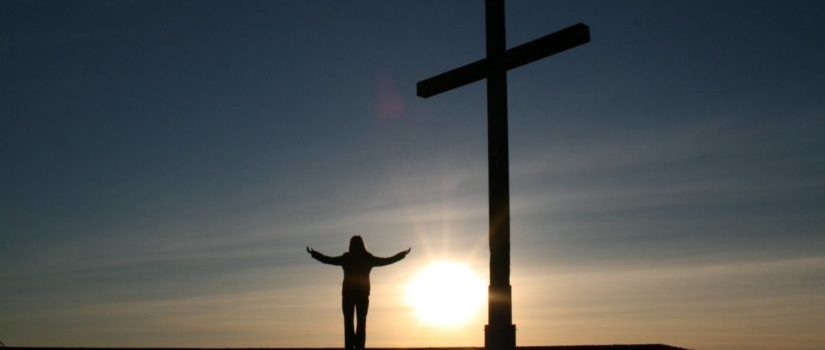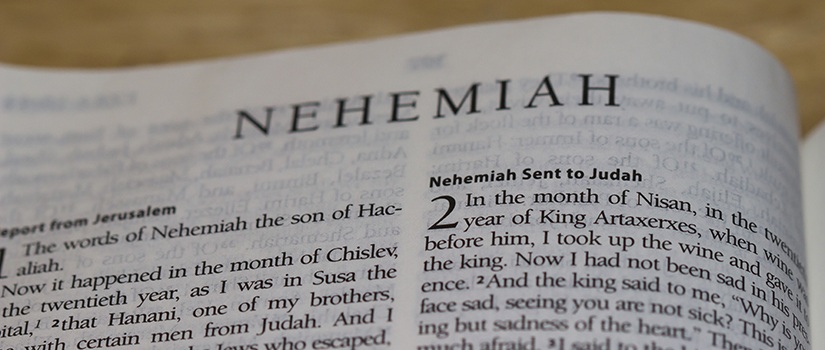THE TRANSFIGURATION OF JESUS CHRIST Part #1
ON THE MOUNTAIN WITH JESUS:
Luke 9:28 “And it came to pass about an eight days after these sayings, he took Peter and John and James, and went up into a mountain to pray.”
No one on earth ever needed to pray less—yet, there are so many of His prayer sessions mentioned in scripture, many times all night sessions.
THREE REPRESENTATIVES FROM EARTH:
Jesus chose Peter, James, and John because they were leaders amongst the Disciples. Paul would later describe them as “pillars” in the Church (Galatians 2:9). These three would also, later, inspire the rest of the Disciples after the ascension of Jesus, concerning what they experienced.
These three whom He chose to witness His glory on the Mountain, would also witness His passion in the Garden. On “The Holy Mount” (2 Peter 1:18) Jesus showed to them His “Glory” (John 1:14), because He intended also to show them afterward His bitter agony in the Garden.
The magnificent splendor—this “excellent glory” (2 Peter 1:17), as Peter describes it, together with the Voice of the Father, “This is My Beloved Son” (2 Peter 1:12-18), would assure them that Jesus was truly God, but that His essential Deity was hidden by the veil of flesh.
And that although He was about to be crucified and slain, yet His Godhead could not die. Peter’s reference to the transfiguration (2 Peter 1:16-18) shows what a deep and abiding impression it made on his mind.
John also who, having seen the Glory of the Son of God, recorded his impression. John 1:1 “In the beginning was the Word, and the Word was with God, and the Word was God. 14. And the Word was made flesh, and dwelt among us, (and we beheld his glory, the glory as of the only begotten of the Father,) full of grace and truth.”
James, was also there on the Mountain and was among the first to die for Christ’s sake (Acts 12:1-2), would also have left his testimony of the Transfiguration had he had the opportunity to do so.
Of these three, only eternity will reveal how much the world owes to them, and how their testimony and writings have promoted the Gospel of Jesus Christ. How eminent were their labors in the early Church?
Another, and possibly the most important reason they were there, that there should be an authentic record of what was transpiring.
Only one name is worthy to stand alongside the “Favorite Three,” a name which taking them singly, overshadows them all, the great Apostle Paul, who had his own version of the Transfiguration on the road to Damascus (Act 9:3-8).
JESUS WAS TRANSFIGURED BEFORE THEM: Matthew 17:2 “And was transfigured before them: and his face did shine as the sun, and his raiment was white as the light.”
Mark 9:3 “And his raiment became shining, exceeding white as snow; so as no fuller on earth can white them.”
Luke 9:29 “And as he prayed, the fashion of his countenance was altered, and his raiment was white and glistering.”
The word “Transfigured” means “Transformation,” or changed in appearance or character, as in the case of our Lord, an alteration of His outward appearance, or countenance. “The fashion of his countenance was altered” (Luke 9:29). “And his face did shine as the sun” Matthew 17:2.
This was bodily change. This bright light shone from within, and not only did His face and body shine, it was so bright that His “raiment was white as the light” (Matthew 17:2).
Here we are to notice, in the first place, the Glory of His Person. From eternity He had been in the ‘form’ of God (Philippians 2:6). This had been His original form, but in the fullness of time He took on the form of a servant (Philippians 2:7).
Now for a while on the mountain, He resumes the form which He had laid aside. The glory of the Godhead broke through and like a sudden sunburst from behind the clouds; there was a glorious outburst of Divine effulgence. In my mind, He illuminated like a bright fluorescent light bulb.
For a space of time, His Essential Glory irradiated and illuminated the form of a servant He wore. Perhaps, as an old writer puts it, that “the Transfiguration was less a new miracle than the temporary cessation of a habitual miracle.”
In other words, here was the Light Of The World enclosed in a human body, and the real miracle was not allowing that tremendous light to illuminate His body at all times.
Here was all the Light in the universe enclosed in a human body. Is it any wonder that the Apostle John said, “And we beheld His Glory?”
This illumination, or transfiguration, came while He was in prayer. A change comes over everyone who enters into intense communication with God. A change came over Jacob at Jabbok and he was made a Prince of God, over Moses when given the law.
THE TRANSFIGURATION, WHAT IT MEANS TO US: That transfigured body of our Lord is the model and pattern of all the glorified saints. Paul says, “As we have born the image of the earthly, we shall also bear the image of the heavenly.” (1 Corinthians 15:49)
Here and now our bodies through “Fearfully and wonderfully made” (Psalms 139:14), are subject to humiliations. They are subject to many infirmities, liable to painful and loathsome diseases, and doomed to dissolution in a few years at most.
Worst of all they contain the seed of sin. Every child that is born, even though its parents may be Holy and Sanctified, is born in sin, having the seed of Adam’s sin passed unchecked into its own body.
But then these bodies of humiliation shall be fashioned like unto Christ’s Glorious Body. These bodies, now so frail, shall be endued with immortal health and vigor. Here and Now the beauty of the fairest face soon fades. But Then the plainest face shall become beautiful, and that beauty shall never fade.
The features Now saddened by sorrow, or marred by accident, disease or war, or disfigured by age— Shall become bright “as the sun when he goeth forth in his might” (Judges 5:31), bright as Moses’ face when he came down from his meeting with God (Exodus 34:29), bright as the Savior’s on the Mount Of Transfiguration, as bright as it always appears to the Saints in Glory.
Every blemish Shall Be blotted out, every wrinkle Shall Be smoothed, every disease expelled, forever removed. Then, on the sightless eyeballs of the blind shall shine the light of an endless day. Then, the ear of the deaf shall be unstopped. Then, the tongue of the dumb shall sing with joy unspeakable. Then, the lame man shall forever lay aside his crutches and his lameness gone and shall leap as the heart.
Moreover, the richest raiment of the earth will be but rags, when compared with those robes of righteousness which the ransomed in heaven, will wear.
FOR JESUS’ OWN SAKE, TRANSFIGURATION TOOK PLACE:
It went far to comfort Immanuel Himself in the near prospect of His agony and bloody sweat of passion, and of His cross. This short period of time, coming amid the wearisome struggles and strivings of earthly life, would cheer Him onward towards the end. This foretaste of former glory pointed towards the coming glory that would crown everlastingly the brief sorrows of the present and would sustain Him in his approaching sufferings.
These witnesses, Moses and Elijah, who came to be with Him, representative of “ten thousand times ten thousand,” were intensely interested in the Redeemers work and intensely looking on, would encourage the human spirit of the Savior—so that braced with new willingness, He would hold on the course appointed and pass through the baptism of blood.
For our sake the “Cloud of Witnesses” (Hebrews 12:1) that surrounds the Christian in his walk serves as a motive to urge him on, so that, “laying aside every weight,” he “runs with patience the race set before him.”
TWO REPRESENTATIVES FROM HEAVEN:
Matthew 17:3 “And, behold, there appeared unto them Moses and Elias talking with him.”
Mark 9:4 “And there appeared unto them Elias with Moses: and they were talking with Jesus.”
Luke 9:30 “And, behold, there talked with him two men, which were Moses and Elias:
31. Who appeared in glory,” (In a glorified body)
It has been asked—how did the disciples know the names of the two men who appeared. Three answers are at least probable.
(1) They may have heard Jesus address them by their old earthly names.
(2) In later conversations, the Lord may have disclosed them to the three.
(3) And, is it not a very thinkable thought that the blessed departed ones bear upon their spirit-forms their old individuality transfigured and glorified?
Were such a vision granted to us, should we not in a moment recognize a Peter, a Mary, a Paul, our mother, or our father?
We could also ask the question, “Why were these two chosen out of the thousands, yea, possibly millions, who had passed the test and entered into Glory in Old Testament Days?”
Now, had all the choirs of heaven been subjected to the most rigid scrutiny, two fitter companions for the Son Of God, on the present occasion, could never have been found.
There are many striking similarities between Moses and Elijah. Both of them had extraordinary calls and experiences with God (Exodus 3:2-6; 1 Kings 19:9-15).
Both of them were messengers to kings—Moses to Pharaoh, Elijah to Ahab. Both of them had been admitted to conferences in Horeb—Moses at the giving of the law, Elijah at the scene of the hurricane, earthquake, and fire.
Both of them had parted the waters, been types of Christ, and fasted forty days. Both of them had left the world in a unique manner—Elijah by a direct translation (2 Kings 2:11); and Moses died in Moab, had angels for pallbearers (Jude 9), and laid in the grave by God’s own hand (Deuteronomy 34:5-6).
Thus, having left earth in a unique manner, Moses and Elijah, now return in a manner more unique still. Luke tells us that they “appeared in glory,” or in a glorified body. No doubt their bodies did shine with the same light as our Lord’s.
Moses the giver, Elijah the restorer of the Law. Moses the representative of the Mosaic, Elijah the representative of the Prophetic Dispensation; Moses the meek but resolute judge, Elijah the stern, unshrinking seer—the law, on the one hand, the ‘prophets’ on the other, and He who came to ‘fulfill’ both, the glistening figure between.
We could regard Moses as the type of all God’s people who have fallen asleep. But at the sound of the last trump, shall come forth from their graves. Elijah let us regard as the type of all those who, when that trumpet shall sound, shall be found alive on earth, and with the mysterious refining passing over their bodies, shall be taken home to glory without tasting death.
FIVE GREAT TRUTHS ARE PRESENTED HERE:
To gather into focus the truth presented here, let us say, that we see in this presence of Moses and Elijah indisputable proof of five great Bible doctrines.
(1.) The first truth is the immortality of the human soul. Moses and Elijah once lived. The one died, the other was translated. Yet neither Moses nor Elijah suffered annihilation. Does not science teach us that no particle ceases to exist? But both, Moses and Elijah, were spiritualized, and transformed into a higher and holier state.
Paul Says, “It is sown a natural body, it is raised a spiritual body” (1 Corinthians 15:44). I feel that God sent them back to let mortals know that our life continues even after death. Let the infidel, if he pleases, die like a dog; Moses and Elijah, on the “holy mount,” teach a very different end indeed.
(2.) The second truth is a general resurrection. If this is not so, then where did Moses come from? Even in nature itself, life comes after death. The worm weaves its shroud or cocoon and dies; but emerges from death brighter and more beautiful than before. The seed sown in the ground dies, it bringeth forth much fruit (John 12:24).
The resurrection of the dead is a fundamental Bible Doctrine.
1 Corinthians 15:51. Behold, I shew you a mystery; We shall not all sleep, (sleep is the Bible’s description of the death of a saint) but we shall all be changed,
52. In a moment, in the twinkling of an eye, at the last trump: for the trumpet shall sound, and the dead shall be raised incorruptible, and we shall be changed.
It must be as easy for God to create a second time (2 Peter 3:13), as to create a first; as easy for him to raise an innumerable number from the dead, as to raise Moses, Or Lazarus.
For further proof from Jesus’ own lips, speaking to Martha, “Thy brother shall rise again” (John 11:23).
(3.) The third truth is the glorious embodied state of all the saints. Luke tells us there talked to Him “two men” Luke 9:30), not two spirits. The two shining presences are spoken of as invested with the properties of life. “Two men, which were Moses and Elias.”
Scripture tells us of two bodies; “there is a natural body, there is a spiritual body” (1 Corinthians 15:44). The latter was that of Moses and Elijah. It may resemble the present in form—‘two men’—but it will differ in being independent of food, unconscious of fatigue, free from decay, and be possessing an undying existence.
Moses and Elijah, therefore, are but a specimen, in this respect, of the great family of heaven in the future. Paul tells us, “For we that are in this tabernacle do groan, being burdened: not for that we would be unclothed, but clothed upon, that mortality might be swallowed up of life” (2 Corinthians 5:4).
(4.) The fourth truth is a beautiful argument in favor of the recognition, by each other, of God’s people in heaven, however remote, like Moses and Elijah, may have been their periods of existence in this lower world.
There were nearly six-hundred years between the death of Moses and the translation of Elijah, and yet the two saints were mutually acquainted. While side by side, or rather, as we have seen, on each side, one, and Jesus in the midst—ever His true position—they took up their places in this brilliant scene.
Let the lesson be read. The children of God shall all know each other in the better world. Frequently, in the same town, even the same church they are not nearly so well acquainted as they ought to be. But in the home of Moses and Elijah they “shall know even as also they are known;” and hold communion, conversation and fellowship, with those from every land, and every age, who, “through faith and patience, inherit the promise.”
Jesus promised that many would come from the East and from the West and “sit down in the Kingdom Of God with Abraham, Isaac, and Jacob.”
Families sometimes get widely scattered here. They play around the same fireside, they sit and eat at the same table, and they kneel in prayer at the same mother’s knee. But one dies on a foreign battlefield, another marries and moves across the country, and of a third nothing is ever heard at all, the last account being a letter some twenty years ago.
And yet, if they have the born-again experience, they shall all meet above in the Father’s House, where things will be better even than the old family hearth. That shall be one long meeting—sunshine without sunset, a summer’s day without a close, a home-coming without any home-leaving.
“They shall hunger no more, neither thirst any more; neither the sunlight on them nor any heat. For the Lamb, which is in the midst of the throne, shall feed them, and shall lead them into living fountains of water, and God shall wipe away all tears from their eyes.” (Revelation 21; & 22) (5.)
The fifth truth is a possible affiliation between Saints on earth and Saints in glory. Moses and Elijah seemed to know, and have a great interest in, what was taking place on earth.
Could it be possible that the writer of Hebrews gave us another clue to this when he said, “Wherefore seeing we also are compassed about with so great a cloud of witnesses, let us lay aside every weight and the sin which doth so easily beset us, and let us run with patience the race that is set before us (Hebrews 12:1)?
We know little about the world of the dead, about the possibilities of inter-communication—they with us, we with them. There is a feeling, widely diffused, that there is some kind of intercourse. Throughout human history, everywhere, in every human culture, the human heart is found asking, speculating over the question, “Is there no bridge between the living and the dead? Is all speech, all fellowship, forever broken?”
May not this, the appearance of Moses and Elijah, who for long generations had been removed from this earthly scene, who were yet profoundly interested in events to be transacted on this globe of ours upon which depended the salvation of the world.
May not this be a glimpse into the hidden method of God’s government of and activity within the world? May, not that which we see in them during this moment of sight into the unseen, be the picture of what is going on even now in the home of the blessed and holy dead?
Is not the talk on Hermon an illustration of a communion of saints; reminding us that heaven and earth are nearer than we think, that it is given to us in the words of the poet, “….join hands with those who went before, And greet the blood-besprinkled bands On the eternal shore.”
The writer of Hebrews tells us, “ye come…. to the spirits of just men made perfect.” (Hebrews 12:23b)
We all have loved ones in glory that we think of so many times, especially when we are going through a trial or test, and a remembrance of some sermon, some Sunday school lesson, a word of correction or warning from mother or father, comes so forcibly to mind that it seems only yesterday we heard their voice. It seems like a communication from another world, urging us to hold true to the path set before us.
Moses and Elijah came back from the glory world at a time when our Lord needed someone to bolster His earthly tabernacle for the coming conflict at Jerusalem.
We will continue this study in Part #2 to follow.
James L. Thornton
www.Godsgrazingfield.net









